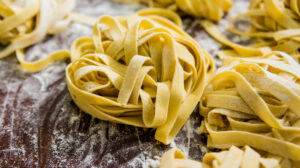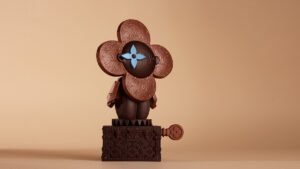Of all the body parts, the stomach is the only one that we refer to as getting “upset.” You’d never refer to a sprained ankle as “angry” or a broken toe as “disappointed,” and yet the stomach is different—an upset stomach offers the impression of a tempestuous child in need of soothing, waiting only for a mollifying elixir to coax it back to bed.
Meet the Angostura Sour. It originates from “the humid shores of Trinidad,” wrote Charles H. Baker Jr., wherein occasionally “stomachs stage sit-down strikes and view all thought of food—present or future—with entire lack of enthusiasm.” Baker was a professional food and drink explorer, very much the Anthony Bourdain of his day—an epicure and bon-vivant who in the 1930s sailed around the world and took note of all the marvelous things he ate and drank, and which he wove into a drinks book called The Gentleman’s Companion: Around the World with Jigger, Beaker and Flask in 1939. It is here that he introduces the reader to the Angostura Fizz, a cocktail that recruits Angostura Bitters as a base spirit, along with the push and pull of sugar and lime, a spot of cream, an egg white, and some soda. In addition to being a valuable stomach settling tonic, he writes, it is also “a very original, cooling drink.”
Original indeed. Angostura, as a reminder, is an acutely bitter, intensely spiced, rum-based bitters bottled at 44.7 percent alcohol, used almost exclusively in miniscule dashes for your or , and so uniformly assumed to be undrinkable that children are allowed to buy it. Using bitters as the base of a cocktail is, to put it mildly, unusual.
If you’ve ever heard of such a thing, it’s probably Giuseppe Gonzalez’s excellent creation the , which hit the cocktail world like a meteor in 2008 with its creativity and deliciousness and triggered a paradigm shift in our understanding of what could be. The community was blown away—you can use bitters as the base of a cocktail? And not only is it not weird or undrinkable but it’s resolutely delicious, practically a crowd pleaser? It felt unspeakably modern. It was only much later that most of us (including Gonzalez himself) discovered that incredibly, Charles Baker had trod that very path some 70 years earlier.
Which brings us back to the Angostura Sour. There’s a lot of variation in how to make it, partly because of the ambiguity in Baker’s instructions: He says to use a lemon or a lime, to use sugar or grenadine, to add 1 tbsp of cream or perhaps less, and to “fill to suit individual taste with club soda, seltzer, vichy, or whatever lures the mind,” which, as far as precision is concerned, leaves much to be desired. We certainly have our favorite version, which ditches the cream and grenadine altogether, as well as the soda water (changing the Angostura Fizz into the Angostura Sour), but still retaining the core insight that an Angostura Bitters based sour is a terrific little drink. This is also the version that appears in the trailblazing beta cocktails (née rogue cocktails), in which they write “it still amazes us that the first recipe in rogue cocktails was a potable abstract of our entire philosophy. Thank you, Charles H. Baker.”
The Angostura Sour is indeed a good tonic for an upset stomach, but it’s more than that. It’s a perfectly lovely drink for whenever you’re looking for something bold but refined, with piles of spice. That it may also have carminative and otherwise salutary effects for the consequences of overeating on, say, a holiday designed for such a thing is an added benefit, but ultimately beside the point. We recommend it for before a meal, after a meal, perhaps during a meal, or whenever the chill of night calls for a bit of strength and a lot of spice, or whatever else lures the mind.
Angostura Sour
- 1.5 oz. Angostura Bitters
- 0.75 oz. lime juice
- 1 oz simple syrup
- 1 egg white
Separate the white of one egg (1 oz. egg white) and put it aside. In a cocktail shaker, assemble the bitters, lime, simple syrup, and then add the egg white to the mixture. Seal tightly and shake without ice for three to five seconds to whip the egg. Then separate the tins and fill with ice, then seal again and shake good and hard for eight to 10 seconds. Strain up into a coupe or cocktail glass, and garnish with a lime twist, a lime wheel, or nothing at all.
NOTES ON INGREDIENTS

Photo: Danny Mirabal
Bitters: Accept no substitutes. Angostura Bitters is indispensable. Just try to get one of the bigger, 16-ounce bottles. The little 4-ounce bottles are a little less expensive but a lot more annoying when each Angostura Sour uses almost 40 percent of the bottle.
Lemon vs. Lime: You can use either, but lime has a more dynamic profile here so I prefer it. But if all you have is lemon, by all means still make the drink.
Grenadine vs. Simple Syrup: Some smart people use grenadine in their Angostura Sours, just not me. The fruit shows up in the mid-palate and adds a tart juiciness that lasts through the finish and is pretty good, but for me, it adds a bunch of noise and distracts from what’s so cool about the spice profile in the bitters.
Egg White vs. Not: What egg white will do in this case is soften the edges of the flavor, making the whole thing a rounder and smoother experience. It also helps to distinguish it from the Trinidad Sour, which explodes on your palate like a stick of dynamite—without an egg white, the Angostura Sour just reminds me of a not-as-good Trinidad Sour. With it, I feel as though it becomes its own drink, more elegant and refined.
Cream and Fizz: I tried this with both milk and cream, both a little and a lot each, and none of them came together for me. It doesn’t not work, but it weighs the whole thing down. I don’t think it’s an improvement.
As for sparkling water—the “Fizz” in Baker’s Angostura Fizz—it continues the egg white’s work of putting even more room between the flavors, stretching it out, and soothing both the bitterness and the intensity. For me, though, I think the egg white does enough of a job doing both of those things, and when I try them side by side (one with soda water and one without), I think the one with soda is too soft. Feel free to try both and see if you disagree, just remember to add the soda after you shake and strain. If you try to shake the bubbles, it’ll force the tin open mid-shake and you’ll learn the hard way that Angostura and clothing don’t mix.
Authors
-

Jason O’Bryan
Jason O’Bryan has set up a professional life at the intersection of writing and cocktails. He’s been managing cocktail bars for the last twelve years, first in Boston and now in San Diego, where he’s…
Credit: robbreport.com











